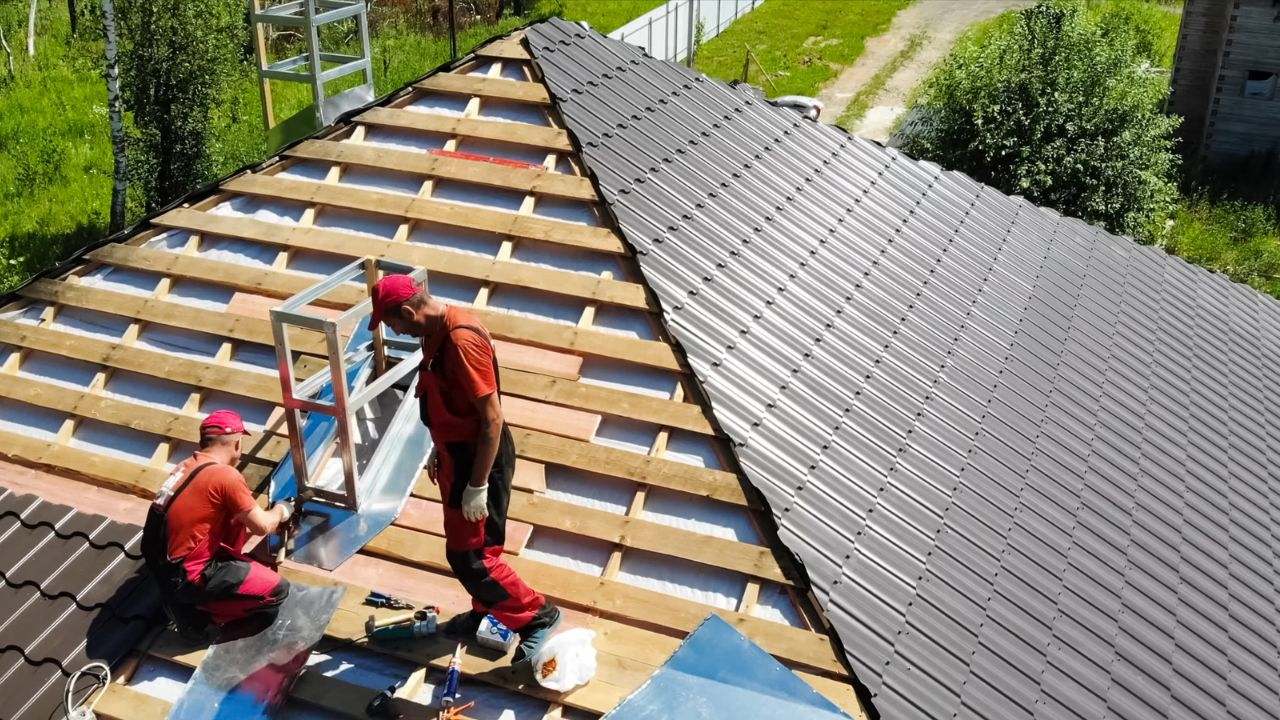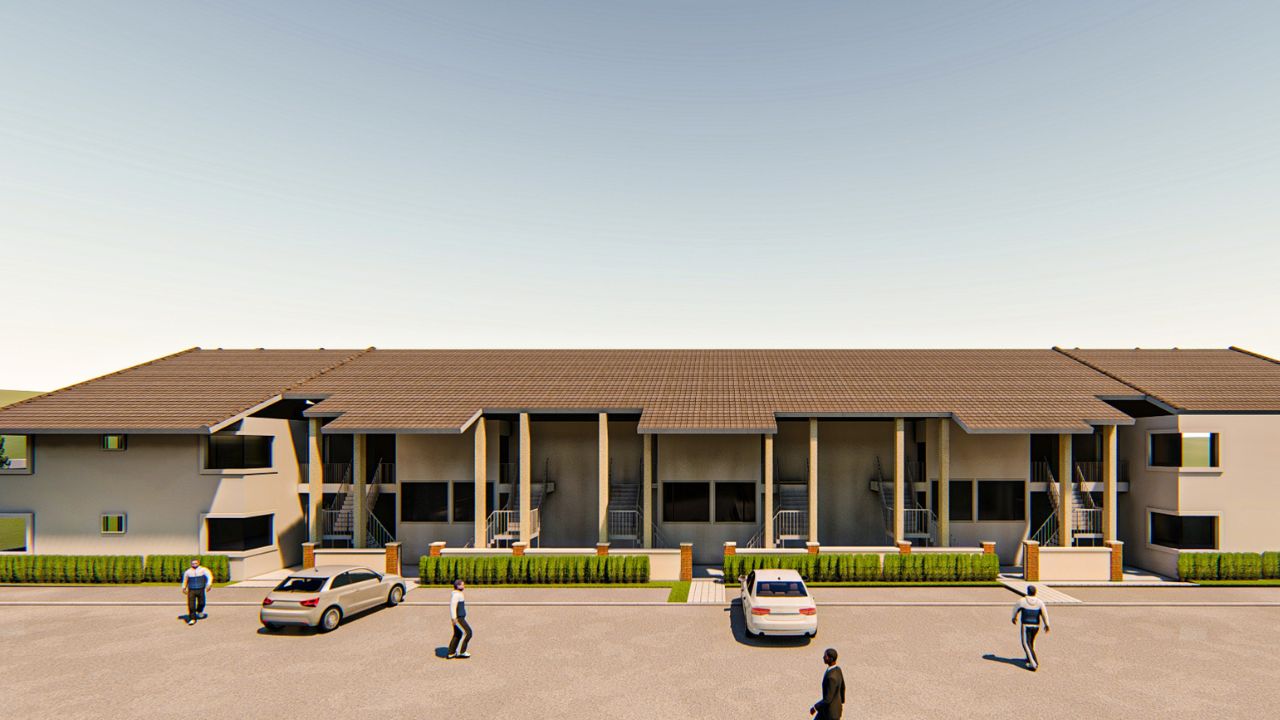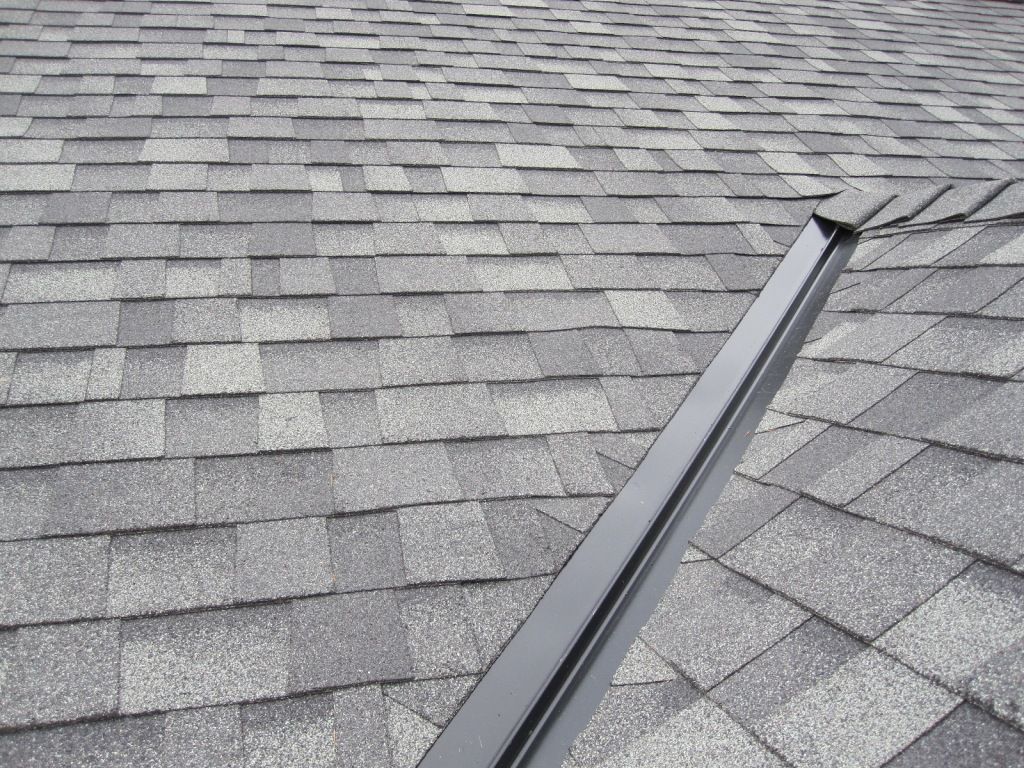What Is Roof Flashing and Why Is It Important?
Read to discover:
- The Importance of Roof Flashing
- Various Roof Flashing Options
- Selecting the Suitable Roof Flashing for Your Home
Roofing materials such as shingles can’t always cover every nook and cranny effectively. That’s why top-notch roofing experts employ metal flashing, either pre-made or custom-bent, to shield and safeguard the areas that shingles can’t reach. In this article, we’ll delve into metal flashing, exploring its various types and materials, to provide you with a comprehensive understanding of this crucial element in roofing.

What Is Roof Flashing and Why Is It Essential?
Roof flashing serves the crucial role of diverting water away from vulnerable areas where it could potentially infiltrate, such as gaps and seams in the sheathing. These vulnerable points often occur where the roof’s surface meets or intersects with other architectural elements or structural components, such as:
- Dormers
- Chimneys
- Vertical walls
- Parapets
- Cupolas
- Vents
- Skylights
- Roof edges
- Roof valleys
Flashing is a fundamental component of any roofing system, and its proper installation and maintenance are paramount for the long-term well-being of your home. In fact, investing in professional installation by a reputable contractor can result in substantial savings in the future.
Furthermore, metal flashing comes in various materials, making it a potential decorative element that can add contrast and visual appeal to your roof. Traditional materials like bare copper or lead-covered copper can infuse a sense of nostalgic charm, enhancing the aesthetic appeal of both new and old homes.

Need A Roofing Contractor?
Licensed Contractor

Need Roofing Estimate?
Highly Accurate

Want Roofing 3D Rendering?
Showcase Your Design Ideas
Call Us To Discuss More at (561)933-8686
What Are the Various Types of Roof Flashing?
Roof flashing comes in several types to accommodate various roofing needs. The most common types include step flashing and continuous flashing, which are typically used around roof protrusions such as chimneys and dormers. Additionally, there’s drip edge flashing and valley flashing, both designed to protect the roof itself. Counter flashing is another specialized type used in conjunction with step flashing for added protection in specific scenarios.
Step Flashing: Step flashing is an angled flashing that fits between individual shingle courses, against a wall, and beneath the siding of a perpendicular surface like a dormer wall. It “steps down” with each shingle course along the roof pitch, preventing water from infiltrating the seam where roof sheathing meets wall sheathing. In some cases, it is intentionally exposed to create an attractive visual element and requires minimal maintenance, typically replaced during roof work.
Continuous Flashing: Also known as apron flashing, continuous flashing is similar to step flashing but involves using one long piece of flashing along a wall, making it continuous rather than stepped. It is bent at an angle to tuck under the siding and goes over the shingles. Maintenance involves periodic cleaning, and it is often replaced during roof replacements.
Drip Edge Flashing: Drip edge flashing acts as a protective “cap” along the exposed edges of the roof deck’s wooden sheets. It is commonly found where gutters are installed, as well as in some locations without gutters. Drip edge prevents water from riding up the underside of the shingles and damaging the roof deck material, such as oriented strand board (OSB). Drip edge is typically replaced with every new roof installation and requires minimal maintenance.
Valley Flashing: Roof valleys, where different roof pitches converge, naturally collect and channel water. Valley flashing is exposed flashing that runs along the length of an open valley. Some homeowners prefer the look of exposed valley flashing, and it provides additional protection against flowing rainwater. Roofers take special care to ensure valleys are well-protected.
Counter Flashing: Counter flashing, often used in chimney flashing systems, differs from most other types of flashing. It is typically observed around a brick chimney and complements step flashing. One side of counter flashing is embedded in the mortar between brick courses, while the other is bent down toward the roof. This type of flashing, when used in conjunction with step flashing, offers comprehensive protection for vulnerable areas.
What Materials Are Employed for Roof Flashing?
Roof flashing typically consists of flexible metals such as copper or aluminum. Below, I will provide insights into some of the most commonly used materials and their respective advantages and disadvantages.

Aluminum: Aluminum is a highly common choice for flashing due to its versatility. It is affordable, widely available, and easy to work with. It comes in a range of colors to match various roofing and siding materials. However, its drawback is that it typically does not enhance the aesthetic appeal of the roof and tends to blend in without drawing much attention.
Copper: Copper is a traditional flashing material with a long history of use. It is malleable and possesses an attractive appearance, with many people appreciating the patina it develops over time. The downside is that copper can be expensive, particularly in its pure form. However, there are more cost-effective alternatives available, such as lower-purity copper alloys that mimic the appearance of copper at a lower cost.
Lead-Coated Copper: Despite its name, lead-coated copper is a classic choice for flashing that does not pose environmental hazards, as per the Environmental Protection Agency (EPA). It boasts a lustrous gray finish, similar to copper, adding a touch of historical charm to a house.
Galvanized Steel: Galvanized steel is an economical and functional flashing material that has proven its reliability over the years. However, it is prone to discoloration through various means. In terms of aesthetics, it is often considered the least appealing option, with few people finding it visually attractive. While galvanized steel is budget-friendly, aluminum is only slightly more expensive and offers better long-term durability.

Need A Roofing Contractor?
Licensed Contractor

Need Roofing Estimate?
Highly Accurate

Want Roofing 3D Rendering?
Showcase Your Design Ideas
Call Us To Discuss More at (561)933-8686
Selecting the Appropriate Roof Flashing Material for Your Home
Choosing the ideal flashing material for your roof ultimately depends on your style preferences and budget considerations. While all flashing materials provide equal protection for your home, they may differ in terms of their aesthetic appeal and cost. For instance, steel and aluminum are generally comparable in price, while copper and lead-coated copper can be more expensive, particularly for larger or more intricate roofing projects.
Flashing Type | Cost per Square Foot | Average Lifespan |
Aluminum | $1.75 | 40–50 years |
Copper | $14 | 60–100 years |
Lead-coated copper | $12 | 75–100 years |
Galvanized steel | $0.90 | 60–80 years |
DIY vs. Professional Roof Flashing Installation
When it comes to installing roof flashing, it is strongly recommended to entrust this task to professional roofers. Most of the roof flashing, apart from a few pre-made components, needs to be custom-crafted using specialized tools like brakes and shears to precisely fit the specific roofing application. Roof flashing typically requires replacement when a new roof is installed, which means homeowners rarely need to handle this themselves.

If you have a particular preference for a specific flashing material, be sure to communicate it to your roofing contractor. In many instances, contractors default to using standard flashing materials, often opting for cost-effective options like aluminum or galvanized steel. Given the higher cost associated with copper or lead-coated copper, contractors may not assume that it’s your preferred choice. Therefore, if you desire copper or a similar material, it’s essential to clearly specify your preference during the discussion with your roofing contractor.
Maintaining and Repairing Roof Flashing Over Time
Roof flashing, being made of metal and typically replaced with each new roof, generally requires minimal maintenance. If it remains undamaged by wind or adverse weather conditions, it will typically last until the next roofing replacement. In the event it becomes soiled or tarnished, a gentle cleaning with a standard household cleaner should be adequate to restore its original appearance. After experiencing severe weather, it is advisable to inspect it to ensure there is no damage.
However, what about potential damage? Detecting damage can sometimes be challenging, as roof leaks can be elusive. Instead of fixating on the specific damage that failing flashing might cause, it is prudent to remain vigilant for any signs of damage. If you observe any issues, it is advisable to consult a professional roofing contractor who can conduct a thorough assessment of your roof and identify the specific problem. In general, keep an eye out for signs such as shingles that are curling or cupping, areas that appear swollen or sagging, rust stains around the flashing, water stains in unusual or vulnerable areas, interior leaks, the presence of mold, and any noticeable staining.
So, What's the Ideal Roof Flashing for Your Needs?
In the grand scheme of things, you can’t make a wrong choice. Any roof flashing material selected, whether by you or your contractor, will generally meet your long-term requirements. While copper may be slightly cost-prohibitive for some, options like aluminum or galvanized steel remain excellent choices that will ensure your home remains dry and secure for many years ahead.
If you’re in need of a new roof, repairs, or an inspection, we recommend completing the form below to get in touch with one of our preferred roof replacement specialists.

Need A Roofing Contractor?
Licensed Contractor

Need Roofing Estimate?
Highly Accurate

Want Roofing 3D Rendering?
Showcase Your Design Ideas
Call Us To Discuss More at (561)933-8686
Frequently Asked Questions (FAQs)
Roof flashing plays a crucial role in directing water away from vulnerable areas of your roof, preventing water infiltration into gaps and seams. It protects against potential leaks and water damage.
Roof flashing comes in several types, including step flashing, continuous flashing, drip edge flashing, valley flashing, and counter flashing. Each type serves specific purposes and is used in different parts of the roof.
Selecting the appropriate roof flashing material depends on your style preferences and budget. Common materials include aluminum, copper, lead-coated copper, and galvanized steel. The choice should align with your aesthetic preferences and cost considerations.
Here’s a summary of the cost per square foot and average lifespan of common roof flashing materials:
- Aluminum: $1.75, 40–50 years
- Copper: $14, 60–100 years
- Lead-coated copper: $12, 75–100 years
- Galvanized steel: $0.90, 60–80 years
It is strongly recommended to hire a professional roofing contractor for roof flashing installation. Custom crafting and precise fitting are often required, and professional expertise ensures proper installation.
Roof flashing typically requires minimal maintenance. If undamaged, it can last until the next roof replacement. Cleaning with a household cleaner can restore its appearance. After severe weather, inspect it for damage, and if you suspect any issues, consult a roofing professional.
The choice of roof flashing material depends on your preferences and budget. While copper is premium but costly, options like aluminum or galvanized steel are budget-friendly and offer reliable protection.
If you need roofing services, you can reach out to a trusted roofing specialist by filling out the contact form provided in the article. They can assist you with your roofing needs.

Need A Roofing Contractor?
Licensed Contractor

Need Roofing Estimate?
Highly Accurate

Want Roofing 3D Rendering?
Showcase Your Design Ideas
Call Us To Discuss More at (561)933-8686



